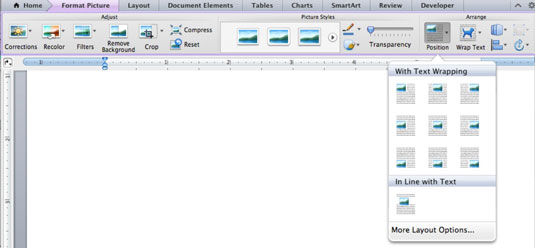
- DELETE SECTION BREAK MAC WORD 2011 HOW TO
- DELETE SECTION BREAK MAC WORD 2011 FOR MAC
- DELETE SECTION BREAK MAC WORD 2011 MANUAL
- DELETE SECTION BREAK MAC WORD 2011 PC
Repeat steps 2 and 3 to delete additional section breaks, as necessary. Your section break should be deleted immediately.
Reselect the Show/Hide button to hide the formatting marks (see figure 1). Clear the Keep lines together, Keep with next, and Page break before check boxes. On the Format menu, select Paragraph, and then select the Line and Page Breaks tab. Select the paragraph following the unwanted page break. DELETE SECTION BREAK MAC WORD 2011 MANUAL
Cursor inserted at start of section break In the document, select the manual page break, and then press DELETE.
 Place your cursor at the start of the section break.įigure 15. Select the Show/Hide button in the Home tab to reveal the formatting marks (see figure 1).
Place your cursor at the start of the section break.įigure 15. Select the Show/Hide button in the Home tab to reveal the formatting marks (see figure 1). 
You can skip to step 2 if your formatting marks are already visible. When you remove a section break or breaks, you will also be removing special formatting, such as custom margins, applied to that section. If your section has a beginning and ending break, you must delete both breaks.
DELETE SECTION BREAK MAC WORD 2011 HOW TO
How to Delete Section Breaks in Microsoft Word Your new section break should replace the old section break.
Select the Layout tab in the Document dialog box. Select Document from the drop-down menu. Select a new type of break in the Section start menu. Select the Layout tab in the Page Setup dialog box.  Select the dialog box launcher in the Page Setup group. Place your cursor anywhere in the section you want to change.
Select the dialog box launcher in the Page Setup group. Place your cursor anywhere in the section you want to change. DELETE SECTION BREAK MAC WORD 2011 PC
The steps to change an existing section break to a different type of section break is different for PC and Mac, so we will cover each separately. Step 2: Remove the Microsoft Office 2011 folder. If the program icon appears in the Dock, press the CONTROL key, click the icon, and then select Quit.
DELETE SECTION BREAK MAC WORD 2011 FOR MAC
How to Update Section Breaks in Microsoft Word Example: If Word for Mac is active, click Word next to the Apple icon from the menu system, and then click Quit Word. Deleting the pages’ Headers or Footers means deleting everything it contains including the page numbers. In Microsoft Word, page numbers are inserted into either Headers or Footers. Option 2: Remove page numbers in MS Word by removing the Footer. Repeat steps 2 through 5 to insert additional breaks, as necessary. In this case, delete one of the page numbers in that section in order to remove all the page numbers. Your section break should be inserted in your document. These breaks normally don’t work well in documents that will be read vertically, such as a traditional Word document or a webpage. Important Note: The Even Page and Odd Page breaks are for documents that will be bound like a book or presented onscreen like a book (two pages on screen at a time).
Odd Page inserts a section break and moves the content after the break to the next odd page. Even Page inserts a section break and moves the content after the break to the next even page. Continuous inserts a section break but does not move the content after the break to the next page. Next Page inserts a section break and moves the content after the break to the next page. Select a section break from the drop-down menu:. Insert your cursor where you would like to insert the section break.įigure 2. (Optional) Select the Show/Hide button in the Home tab to show the formatting marks in your document, including section breaks. If this sounds appealing, let me know here.How to Insert Section Breaks in Microsoft Word If you find yourself spending hours formatting Microsoft Word documents, I can teach you to reduce that time to less than 5 minutes. The solution is to hold down ALT when you press tab, and it will insert the TAB character instead. Hope that helps someone, my wife and I found it very confusing.īonus tip - How to find and replace tab characters:Ĭheck out my ‘replace’ dialog above, notice that I’m replacing a tab character? Well if you click the find box and press TAB it won’t enter the tab character, it will take you to the next box (oh no!). Finally it will ask you if you want to do the rest of the document, simply click ‘no’ and you’re done. You’ll notice that there’s no mention that this will only apply to the current selection, but you’ll have to trust me.ĭon’t press find next, or anything like that, click ‘replace all’, and it will do your find and replace in your current selection only (I promise!). Now here’s the unintuitive bit - click on the ‘replace’ tab. Here you’ll see that it says you’re going to search within the ‘current selection’, that’s good! It’ll look like this (I’m going to replace tab characters with a single space): Then select Edit -> Find -> Advanced Find and Replace Here goes.įirstly, select some text you want to ‘find and replace’ within. It’s actually very simple, but Word tells you you’re not doing the right thing. 
This keeps biting me, so I thought I’d write it down.








 0 kommentar(er)
0 kommentar(er)
